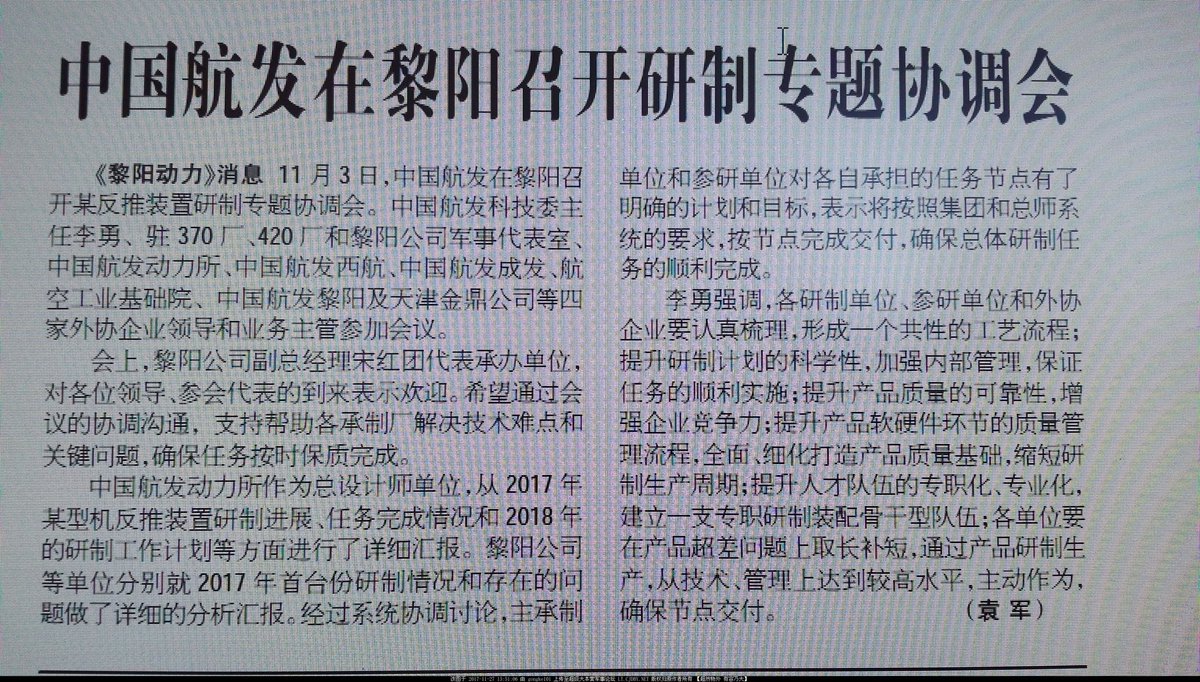Hendrik_2000
Lieutenant General
Well this is real for sure at last they crack the production of single crystal turbine blade From Global T today
It was posted before but this time we get more news and show at national news
GT(Gas Turbine) technology is highly restricted and China is excluded. So she has to invent everything themselves from production equipment all the way to the metallurgy. It take more time but China gain independence
Chinese enterprise makes core component of aircraft engines: report
Source:Global Times Published: 2017/10/24 21:53:39
Chengdu Aerospace Superalloy Technology Co (CAST), a listed mining company, made a great breakthrough in producing a single-crystal blade, the most important part of an aviation engine, national business channel CCTV 2 reported on Monday.
Designed to work at the highest temperatures, under the most complicated pressure levels and exposed to the most adverse environment in the engine, the single-crystal blades were produced by CAST to a high standard and used customized casting techniques.
The single-crystal blades directly determine the performance of an aviation engine.
"Specifications of the turbofan engine have reached an advanced international level. All components have independent intellectual property rights for both design and production, especially the most difficult part - the single-crystal turbine blades inside the engine," Xu Gang, a member of the aircraft engine R&D team and dean of the Laboratory of Light-duty Gas-turbines in the Institute of Engineering Thermophysics of the Chinese Academy of Sciences, was quoted as saying in the report.
The development has broken the US monopoly in the global market, said the report.
In the core of a thrust engine, the component consists of 60 single blades. Each blade outputs power that is equivalent to a sport utility vehicle car with a 2.0 liter engine and the temperature is more than 1,720 C.
To avoid melting, the materials for single-blade production include a rare metal called rhenium.
To maintain its dominant position in the aviation industry, the US and some other Western countries have blocked China from both material and technical details for years, according to the report.
CAST is able to purify rhenium for the blade product in a customized furnace now, it said.
It was posted before but this time we get more news and show at national news
GT(Gas Turbine) technology is highly restricted and China is excluded. So she has to invent everything themselves from production equipment all the way to the metallurgy. It take more time but China gain independence
Chinese enterprise makes core component of aircraft engines: report
Source:Global Times Published: 2017/10/24 21:53:39
Chengdu Aerospace Superalloy Technology Co (CAST), a listed mining company, made a great breakthrough in producing a single-crystal blade, the most important part of an aviation engine, national business channel CCTV 2 reported on Monday.
Designed to work at the highest temperatures, under the most complicated pressure levels and exposed to the most adverse environment in the engine, the single-crystal blades were produced by CAST to a high standard and used customized casting techniques.
The single-crystal blades directly determine the performance of an aviation engine.
"Specifications of the turbofan engine have reached an advanced international level. All components have independent intellectual property rights for both design and production, especially the most difficult part - the single-crystal turbine blades inside the engine," Xu Gang, a member of the aircraft engine R&D team and dean of the Laboratory of Light-duty Gas-turbines in the Institute of Engineering Thermophysics of the Chinese Academy of Sciences, was quoted as saying in the report.
The development has broken the US monopoly in the global market, said the report.
In the core of a thrust engine, the component consists of 60 single blades. Each blade outputs power that is equivalent to a sport utility vehicle car with a 2.0 liter engine and the temperature is more than 1,720 C.
To avoid melting, the materials for single-blade production include a rare metal called rhenium.
To maintain its dominant position in the aviation industry, the US and some other Western countries have blocked China from both material and technical details for years, according to the report.
CAST is able to purify rhenium for the blade product in a customized furnace now, it said.




